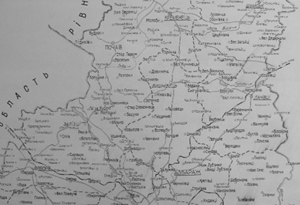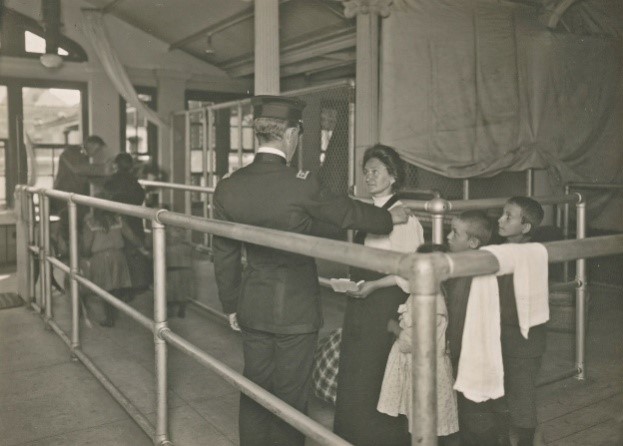
Between 1791 and 1917, Jews could only live in a limited area of the Russian Empire and its border was called the line of permanent Jewish settlement. However, the existing law did not cover certain groups of people (merchants of the first guild, those who had undertaken higher education, serving recruits, artisans, etc.).
In 1791, Catherine II, at the request of a Jewish merchant, ordered the allocation of land to Jews for permanent residence. Following the entry of the eastern part of the Commonwealth into the Russian Empire, the so-called Pale of Settlement was established. Since Jews were forbidden to live in villages, small villages in the Kingdom of Poland, Lithuania, Belarus, Bessarabia, Latgale, the south of Russia and the territory of present-day Ukraine were allocated to them.
Only 200,000 of the 5 million Jews had managed to move outside that Pale by the end of the 19th century. The remainder, as a result of tangible oppression, lived a very unsettled and poor existence. According to the historian Walter Lacker, in the early 1880s the overwhelming majority of Jewish families in the Russian Empire were much poorer than the rest of society and suffered extreme hunger.
It was only in 1859 that Alexander II introduced a law that gave the right to freely choose a place of residence outside the Pale of Settlement to merchants of the first guild (provided that they were there for two years before the decree was issued, and for five years after), who were allowed to pick a clerk and four domestic servants. The decree did not operate within the fifty-verst border strip of Bessarabia and the western provinces, Cossack cities and Finland.
It was possible to join the first guild by receiving a trade certificate (500–1,500 rubles per year) and a guild certificate (75 rubles per year). In this regard, the actual pursuit of any industrial or commercial business and the consent of the guild were not required, which made it possible to become a merchant of the first guild, bypassing tax payments and a five-year term. However, for the majority of the population in those days, this was a very large amount of money which was almost impossible to amass.
In 1861, people who had gone through higher education, or who had academic degrees to become doctors of medicine or surgery, as well as doctors, masters or candidates of other sciences, were allowed to reside outside the Pale of Settlement. Subsequently, the laws of 1865–67 also permitted Jewish doctors without a degree to live inside the Pale.
In 1872, Jewish graduates of the St. Petersburg Institute of Technology were granted the freedom to choose their place of residence, and in 1879 this also applied to graduates of any universities as well as various medical workers.
The result of the existing restriction of many freedoms and civil rights was an increase in the migration of Jews to the USA (between 1881 and 1914, 1.5 million Jews emigrated from Russia), Argentina and Palestine, as well as a rise in revolutionary sentiments among the Jewish people. Many representatives of the cultural strata of society were critical of the policy of restriction. According to the memoirs of Vladimir Korolenko, the Pale of Settlement was perceived as something indestructible, although this term was not used.
It was only on August 19, 1915, due to martial law, that the Ministry of Internal Affairs allowed Jews to reside freely in any part of the country. From that moment on, the Pale of Settlement as such ceased to exist.
Most of the information required for genealogical research has been preserved precisely in US immigration reports (which most hired genealogists can access) as well as in the censuses of the population of the Russian Empire. This has enabled a high success rate in historical research for ancestors that crossed the Pale line.

enquiry![]() truegenealogist.com
truegenealogist.com
